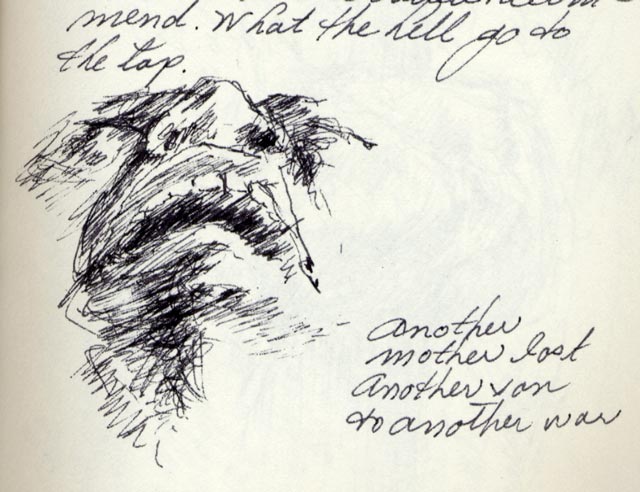
by Theresa Wolfwood
If we want to shape a peaceful society, we need to analyze and understand where and how we fail in that goal; we need to commit ourselves to achieving our goal.
All art is political, even art which purports to be apolitical is political because it supports the dominant paradigm. A peaceful world will be a world of justice and harmony with the natural world. It includes the ideal that all people have a right to live fully, that fullness includes the right to express fully each one's creativity.
By expressing our vision in many ways, including artistically, we help create the world we want. We offer inspiration to others to be creative in many ways, including organizing and working for that peaceful world.
We also break down the passivity and fear which the dominant corporate powers inculcate in us.
Art that inspires us (we all cherish examples) nurtures our own creativity. As we release our fears and respect our peace-based creativity, we lose fears of other aspects of life. In a culture of peace, art becomes a part of the daily life of all society, not a separate commodity produced by professional elites for the rich to buy and hoard. As we integrate art in our work for peace, honour the work of our community, other artists and our colleagues, share hammers and ideas, we create a peaceful world.